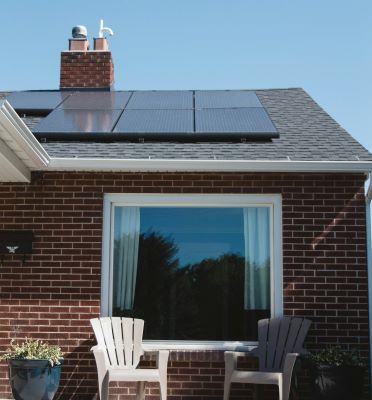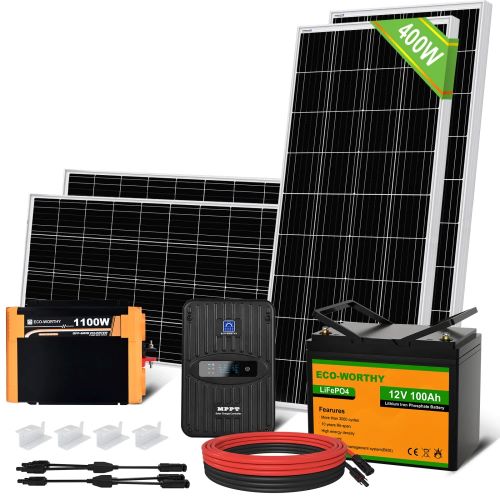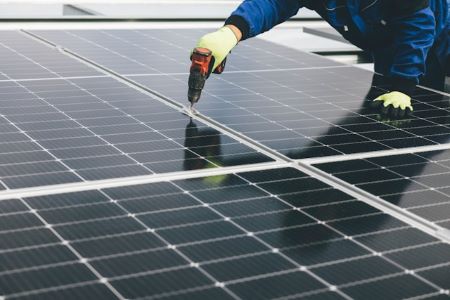
As the sun blazes down on the Lone Star State, it’s not just warming our skies—it’s transforming how Texans think about energy. Imagine your rooftop morphing from a simple shelter into an eco-friendly powerhouse, harnessing sunlight to slash electricity bills and reduce carbon footprints. In this article, we’ll explore how solar energy is revolutionizing homes across the state, making sustainable living not only accessible but also incredibly beneficial. Join us as we delve into innovative technologies, inspiring success stories, and practical tips to help you turn your home into an energy-efficient haven while contributing to a greener future for all Texans!
Introduction to Solar Panels Texas and its Mission
Texas is known for its wide-open spaces, vibrant culture, and sunny skies. But there’s another shining star in the Lone Star State—the rise of Solar Panels Texas. As energy needs evolve, so does our approach to meeting them sustainably. Solar Panels Texas has emerged as a leader in transforming rooftops across the state into powerful energy solutions that benefit homeowners and businesses alike.
This initiative, with a mission centered on harnessing renewable energy, aims to improve energy independence while reducing carbon footprints. Imagine turning your rooftop into an asset that powers your home and contributes positively to the environment; that’s what solar power offers. Join us as we dive deeper into how these innovative technologies change lives and landscapes throughout Texas.
The Benefits of Solar Energy and How it Works

Solar energy harnesses the power of the sun, converting sunlight into electricity. This innovative process is both efficient and sustainable.
One major benefit is cost savings. Solar panels can significantly reduce homeowners’ electricity bills over time. Many Texas residents find these systems pay for themselves through lower utility costs.
Environmental impact also plays a key role. Solar energy reduces reliance on fossil fuels, lowering greenhouse gas emissions. It contributes to cleaner air and a healthier planet.
Maintenance requirements are also minimal; most solar panels have warranties lasting 25 years or more. After installation, they require little upkeep beyond occasional cleaning.
Finally, investing in solar panels increases property value—a desirable feature for potential buyers in an eco-conscious market like Texas.
Exploring Different Types of Solar Panels and Their Efficiency
Understanding the available types is crucial when choosing the right solar panel for your home or business. The three main types of solar panels are monocrystalline, polycrystalline, and thin-film. Each type has unique characteristics and advantages, making it suitable for different situations.
Monocrystalline solar panels are made from a single silicon crystal, giving them a uniform appearance with rounded edges. These panels are highly efficient and perform well in direct sunlight. They are black due to the high purity of silicon used in their production. Monocrystalline panels also have a longer lifespan than other types, lasting up to 25 years or more with proper maintenance.
Polycrystalline solar panels, on the other hand, are made from multiple silicon crystals melted together. This gives them a distinctive blue hue and squared edges. While they may not be as efficient as monocrystalline panels, they still offer good performance in sunny conditions at a lower cost. Polycrystalline panels also have a relatively long lifespan of around 20 years.
Thin-film solar panels are made by depositing layers of photovoltaic material onto a substrate such as glass or plastic. This process results in flexible, lightweight panels that can be easily integrated into building materials like shingles or windows. Thin-film panels come in various colors and can even produce electricity in low-light conditions due to their high sensitivity to different wavelengths of light.
One key advantage of thin-film technology is its lower cost than traditional crystalline silicon-based solar cells. However, they do have lower efficiency levels and may require more surface area to generate the same amount of electricity as monocrystalline or polycrystalline panels.
Each type of solar panel has its own strengths and weaknesses that must be considered when deciding. Monocrystalline panels are ideal for areas with high sunlight exposure and limited space, while polycrystalline panels offer a more budget-friendly option. Thin-film panels, on the other hand, provide flexibility and versatility in their applications but may require more surface area to produce the same amount of electricity. Ultimately, it is important to consult with a solar professional to determine the best type of panel for your specific needs and location.
The Process of Installing Solar Panels on a Rooftop
Installing solar panels on your rooftop can be a great investment for your home in Texas. Not only does it reduce your carbon footprint and contribute to a cleaner environment, but it also helps you save on electricity bills in the long run.
If you are considering installing solar panels on your roof, here are some key steps to follow:
1. Determine if Your Roof is Suitable for Solar Panels:
The first step in the installation process is determining if your roof is suitable for solar panel installation. Ideally, a south-facing roof with minimal shading from trees or other structures is best for maximum sunlight exposure. You should also consider the age and condition of your roof, as it may need repairs before installing solar panels.
2. Assess Your Energy Needs:
It’s essential to know how much energy you need to power your home before choosing the size and number of solar panels required. This can be determined by looking at past electricity bills and factoring in any planned changes, such as adding new appliances or expanding your household.
3. Obtain Necessary Permits:
Before installing solar panels, you must obtain any necessary permits from local authorities in Texas. Depending on where you live, these may include building permits, electrical permits, or zoning approvals. Researching and understanding these requirements beforehand is essential to avoid delays during installation.
4. Choose Your Solar Panel System:
Different types of solar panel systems are available, including grid-tied, off-grid, and hybrid systems. Research and consult a professional installer to determine which system best suits your needs and budget.
5. Install Mounting Hardware:
Once all the necessary preparations have been made, it’s time to install mounting hardware onto your rooftop that will hold the solar panels securely in place.
6. Connect Wiring:
Next up is connecting the wiring between the mounting hardware and inverters, which converts the DC power generated by the solar panels into AC power used in homes.
7. Install Solar Panels:
After the wiring is in place, installing the solar panels on the mounting hardware is time. This process requires careful handling of the panels and precise placement to ensure maximum sunlight exposure.
8. Connect to Your Home’s Electrical System:
Once the solar panels are installed, they must be connected to your home’s electrical system through an inverter. This allows you to use your panels’ solar energy or switch back to grid electricity if needed.
9. Final Inspections and Maintenance:
After installation, a final inspection will be conducted to ensure everything is working correctly and safely. It’s also essential to schedule regular maintenance checks for optimal performance and longevity of your solar panel system.
By following these steps, you can successfully install solar panels on your rooftop in Texas and enjoy its many benefits while contributing to a greener future.
How Solar Panels Texas is Making an Impact in the Community

Solar Panels Texas is not just about energy but community transformation. By providing accessible solar solutions, they empower homeowners and businesses to embrace renewable resources.
Through educational workshops, the company raises awareness of sustainable practices. Many residents are now more informed about their energy choices and environmental impact.
Solar Panels Texas collaborates with local organizations to fund solar projects in underserved neighborhoods. This initiative ensures that even those with limited means can benefit from clean energy sources.
Their commitment extends beyond installations. They actively participate in community events, fostering connections among eco-conscious individuals and families.
Solar Panels Texas’s championing sustainability inspires a collective effort toward a greener future for all Texans. Their work resonates throughout the region, encouraging others to consider how they can contribute positively to their communities through solar energy initiatives.
Future Innovations and Advancements in Solar Energy In Texas
The future of solar energy is bright and full of potential. Technological innovations are set to revolutionize how we harness the sun’s power.
One exciting development is the emergence of solar tiles. Unlike traditional panels, these blend seamlessly with roofs, offering aesthetics as well as functionality.
Another area gaining traction is energy storage solutions. Advanced batteries will enable homeowners to store excess energy for nighttime use, maximizing efficiency and reducing reliance on the grid.
Moreover, research into organic photovoltaic cells promises flexibility and lower production costs. These lightweight materials could open doors for applications beyond rooftops—think portable devices powered by sunlight.
Artificial intelligence also plays a pivotal role in optimizing solar energy systems. Smart algorithms can predict weather patterns and adjust settings accordingly for peak efficiency.
As advancements unfold, solar energy will undoubtedly play an increasingly vital role in our sustainable future.
Conclusion: Solar Panels Texas Helps People Shift Towards Renewable Energy
The shift towards renewable energy is more than a trend; it’s a movement toward sustainability and independence. Investing in solar panels can save significant utility bills while reducing your carbon footprint. With the prices of solar technology decreasing and incentives available for homeowners and businesses, there has never been a better time to explore options.
By choosing solar power today, you’re investing in a cleaner tomorrow. Embrace the opportunity that lies ahead with Solar Panels Texas as your partner in harnessing the sun’s potential for your home or business.
The use of solar panels in Texas has gained significant momentum in recent years as more people shift toward renewable energy sources. This shift benefits the environment and the residents of Texas, who can reduce their reliance on traditional fossil fuels.
One of the main reasons behind this shift towards solar energy is its affordability. Technological advancements have significantly decreased the cost of installing solar panels, making it a viable option for homeowners and businesses. In fact, according to a report by Environment Texas Research & Policy Center, the cost of residential solar panel systems in Texas has decreased by 63% since 2010.
Moreover, with abundant sunlight throughout the year, especially in areas like West Texas and Houston, solar energy is ideal for powering homes and businesses. The state’s favorable climate makes it possible to generate enough electricity through solar panels to meet most, if not all, of one’s energy needs.
In addition to being affordable and efficient, solar panels have numerous environmental benefits. Solar energy is a clean and renewable source that does not emit harmful greenhouse gases or pollutants into the air. This helps reduce carbon footprint and combat climate change while preserving natural resources for future generations.
Furthermore, installing solar panels can also have financial benefits for Texans. In addition to reducing monthly electricity bills, homeowners can take advantage of net metering programs offered by utility companies. Excess electricity generated through their solar system can be sold back to the grid at a competitive rate.
Going solar in Texas offers numerous advantages—from being environmentally friendly and cost-effective to potentially saving on utility bills and taking advantage of government incentives. With solar panels becoming more accessible and affordable, they transform rooftops into energy solutions and help people shift towards a cleaner and more sustainable future.
Solar Panels Texas stands at the forefront of this transition, providing reliable installations tailored to meet individual needs. Combining innovative technology and local expertise makes the choice simple—transforming rooftops into green energy solutions benefits you and contributes positively to our environment.

